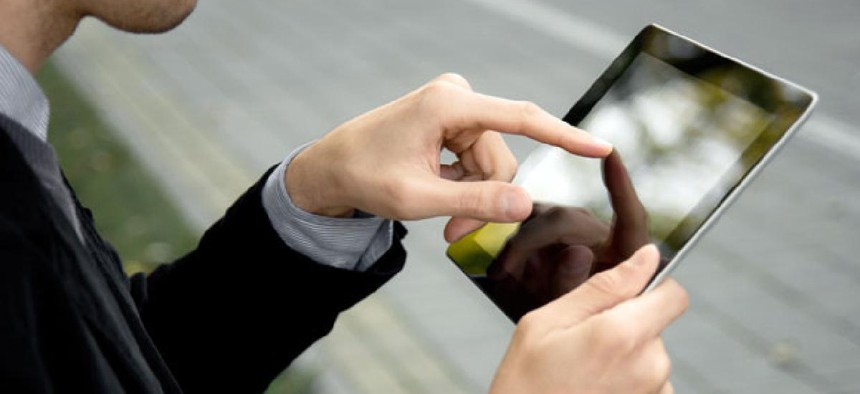iPads could pick up on unique biological traits in individual hand gestures

Thinkstock
Research presents new biometric possibilities for authenticating tablet users.
Tablets and iPads could soon pick up on unique biological traits of individuals who swipe and rotate their palms across touch screens -- a development that could lead to new methods of authenticating users.
A scientist at the Polytechnic Institute of New York University is working on the foundations for technology that can biometrically authenticate users’ hand gestures with multi-touch sensors.
The goal is to create an iPad app that replaces the use of text passwords with strokes that a hand can make on a keyboard. Unlike existing authentication touch technologies used in cell phones -- which ask users to draw shapes or manipulate dots on a screen -- this touch technology will recognize an individual’s biological features.
Napa Sae-Bae, a second-year doctoral student at NYU-Poly’s department of computer science, built an algorithm to detect individuals’ unique biological traits from the shape of their hands, how their fingers move in relation to one another and the length of their fingers. She created a program for the iPad that would match people to gestures they made on a touch screen. The movements ranged anywhere from rotating an open palm to opening up a clenched fist against a screen.
In experiments with 34 participants, Sae-Bae achieved a 90 percent accuracy rate in verifying that gestures belonged to those who made them. Her research won the third prize in antivirus company Kaspersky Lab’s student competition, “IT Security for the Next Generation,” held earlier this month at Delft University of Technology in the Netherlands.
The technology raises possibilities for new ways to authenticate users into government systems and detect malicious attackers.
This type of authentication strategy may be preferable to retina scanning because it uses sensor technologies widely available on the market, such as those on iPads and Android touch tablets. There’s no need for new devices to be created from scratch, Sae-Bae told NextGov.
A technology that authenticates a person by a hand gesture could also be seen as less intrusive then retina scanning and fingerprinting, Sae-Bae said. “Unlike gestures, fingerprints are physiological physical traits that you can’t change,” she said. “There’s the feeling that these are supposed to be secure and private.”
But the fact that people move differently on some days -- because of fatigue, for instance -- may affect the accuracy of hand gestures. Going forward, Sae-Bae will explore how stable and accurate an individual hand gesture is over time and try to build a program that takes these variations into consideration.
Sae-Bae says it’s going to be at least a year before her iPad app will be ready. One idea she is toying with: getting users to manipulate images with their palms on a screen so that program can pick up on their biometric traits and grant them entry to a system.





